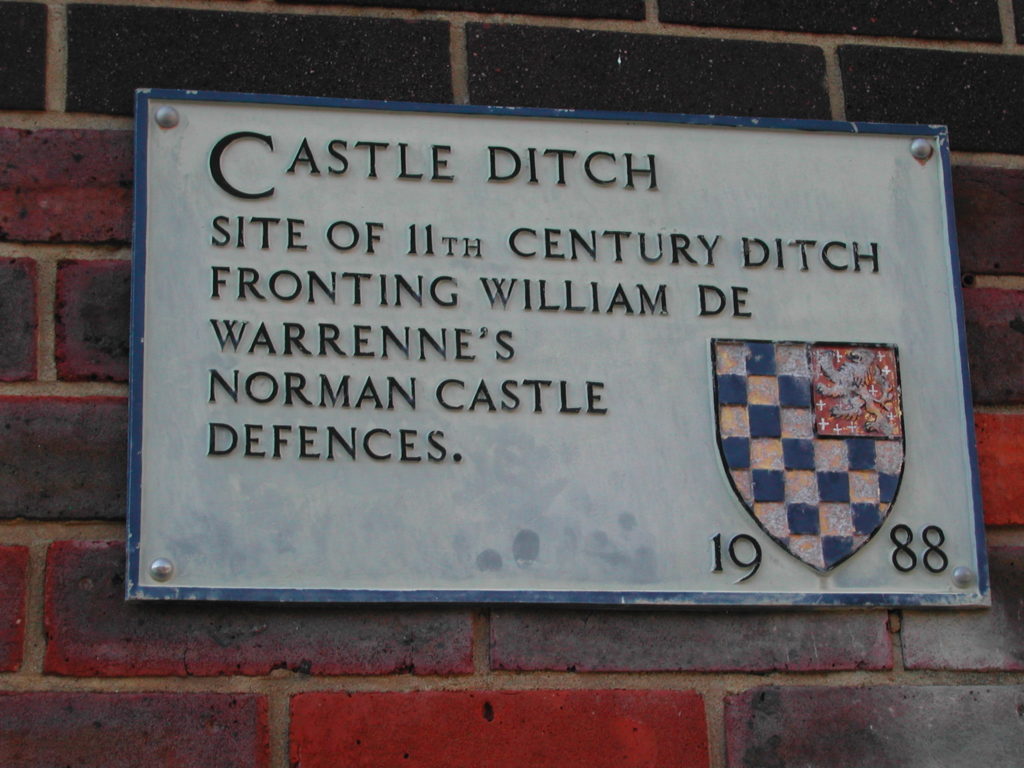The Association for the preservation of Bellencombre Castle (A.S.C.B.), original seat of the future Earls of Surrey, was created in February 2017 by a group of enthusiastic volunteers determined to preserve what remained of the castle and to restaure the remains to a condition in which it could be properly appreciated.
The castle was founded ca. 1050 by WILLIAM DE WARENNE, a close supporter of William the Bastard, Duke of Normandy who after the invasion of England and the battle of Hastings in 1066 became William I – king of England. In recognition of de Warenne’s support William the Conqueror, rewarded by de Warenne with grants of large tracts of English land in which de Warenne built three of the early English castles – at Lewes in Sussex, at Conisbrough in Yorkshire and notably at Castle Acre in Norfolk. The latter together with its priory survies in part to this day as one of the finest examples of early Norman architecture in Britain.
The plan of the Bellencombre castle conforms to the typical Norman castle of the 11thC and 12thC – known as a « motte and bailey castles« . These distinctive and somewhat primitive fortifications consisted of a hight earthen mound (the « motte ») (not to be confused with a moat) on the summit of which was built an upper bailey within an enclosure formed by a protective timber palisade ther whole of which was surrounded by a deep, dry, defensive ditch.
Such fortifications were both a military refuge and administrative centre of the vassals or barons of the Dukes of Normandy.
The medieval chronicler Orderic Vitalis mentions sixty such fortifications in Normandy. Like many such castles, Bellencombre stands on a prominent spur of land commanding long view over the beautiful Varenne valley.

William de Warrenne’s Norman Castle Defences (Lewes)
After more than one hundred years under the stewardship of the Warenne family, the castle passed through the hands of several families suffering a number of sieges, the last being by Charles le Téméraire in 1472.
The practical value of such castles inevitably expired so that, like the great majority of them. Bellencombre was abandonned and little by little became strangled by mother nature. In 1834. Mr Dillard bought the remains and in an act of cultural vandalism dismantled what remained of the stone towers and other elements and selling the proceeds for building material.
The lithographs of the two towers at the entrance to the upper bailey and of the medieval Church within the lower bailey are thanks to an English traveler, M. A. Lower who sketched them in 1820 before Dillard had completed his demolition. The original medieval Romanesque Church which stood within the enclosure of the lower bailey was destroyed in 1866 following the construction of a new (existing) Church located in the foot of the dry moat on the north side. Few years after, the existing vicarage (1887) and village girls school (1902) were also built within what was the lower bailey.
Once cleared of trees and smothering vegetation, the motte is an imposing monument to manual labour, particulary when seen from the base of the dry ditch.
To the English visitor, Bellencombre is important because it represents a prototype model of the typical Norman motte and bailey castle in Britain – examples of which spread rapidly following the Norman invasion as a means of establishing their new authority and subjugating the native popultion.
Bellencombre castle is also a vestige of the age of « dual estates » – when Norman or Anglo-Norman magnates held lands in both England and Normandy. Indded in due course the Warenne family became definitively Anglicised so much so that in 1346, we see « le fitz du comte de Warenne » – William de Warenne and his retinue of 4 knights, 15 archers and 8 Welshmen fighting in Edward III’s division at the battle of Crécy.
The logo of the A.S.C.B. association consisting of the coast of arms of the Warenne family superimposed with the two léopards of Normandy.
The name Warenne comes from Varenne, the river which flows through Bellencombre to Dieppe.
For further information, contact the A.S.C.B.
Texte rédigé par Lionel Gaudefroy, traduit par Sir Philip Preston.
